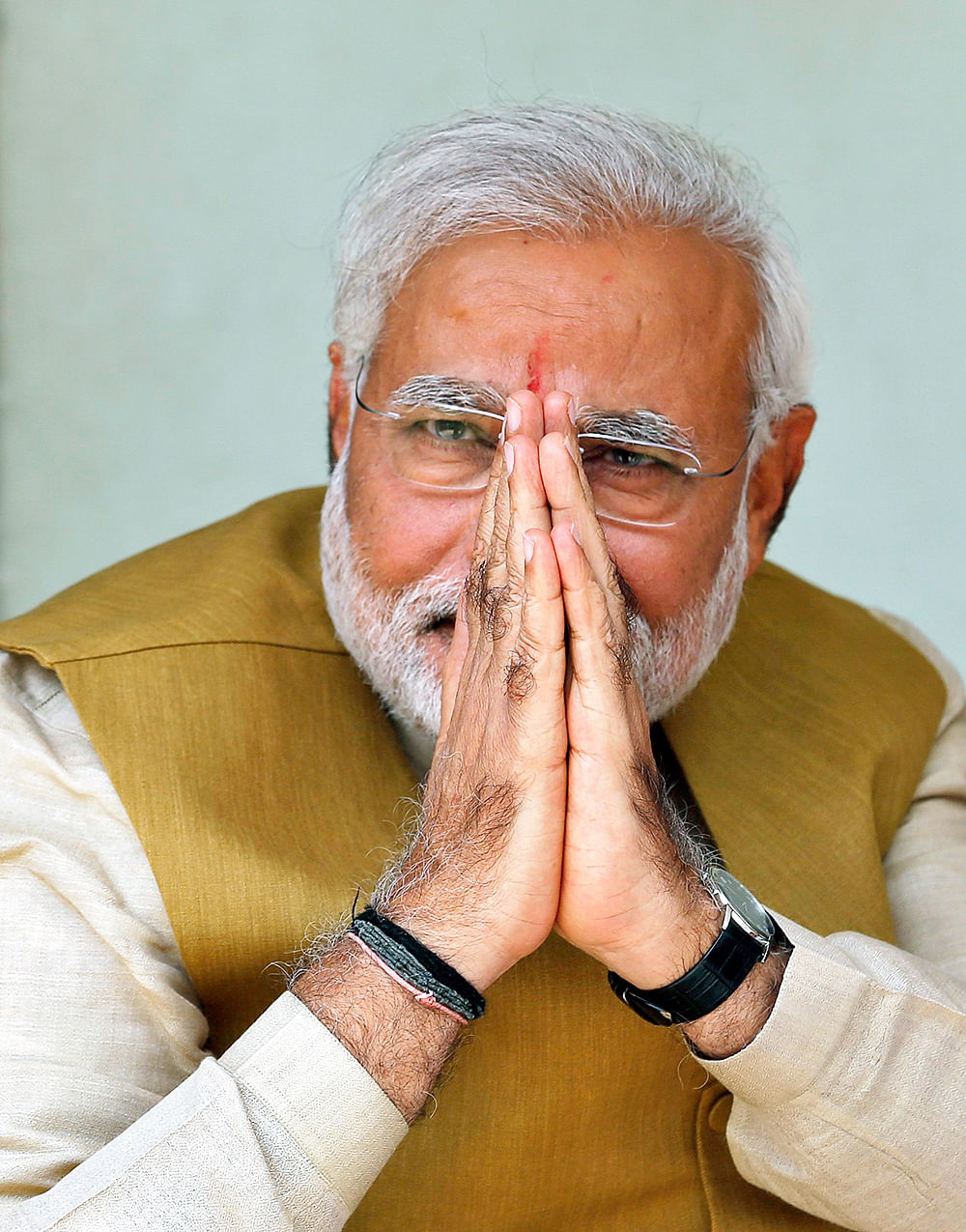From tea vendor to PM
From tea vendor to PM

From vending tea at a village railway station set up by his father to the throne of prime minister in the world’s largest democracy, it has been a phenomenal journey for Bharatiya Janata Party leader Narendra Modi.
Born in a family belonging to a socially backward community of oil crushers in Mehsana district of home state of Gujarat, Modi, 63, used his humble roots to full advantage in this election contrasting it to the gilded upbringing of the Nehru-Gandhi dynasty and its scion Rahul Gandhi who fronted the campaign for ruling Congress party, reports our New Delhi correspondent.
Inspired by Gautama Buddha and Swami Vivekananda (whose real name was Narendra Dutta), Modi left home after school, virtually snapping off all family ties as he found his calling in BJP’s spiritual mentor Rashtriya Swayamsevak Sangh, irresistible.
Ever since Modi was deputed by the party to Gujarat, his home state, in 2001 to rescue BJP from existence-threatening internecine war to succeed chief minister Keshubhai Patel, Modi has acquired a stern look and an aggression typical of a battle-hardened politician, a battle that saw him rising steadily through the party ranks and striding up the echelons of the organisation, knocking out in the process veterans like LK Advani and Murli Manohar Joshi.
If Modi was seen as BJP’s saviour in Gujarat, he had been brought in as the party’s prime ministerial candidate 12 years down the time span at a time when it was out of power for a decade and was struggling with internal squabbles among senior leaders jockeying for positions and prominence.
Once a poster boy of hardline Hindutva particularly after the communal riots in Gujarat which left at least 1000 people, mostly Muslims, dead in 2002, that has made him a deeply polarising figure, Modi has sought to struggle to shake off that perception since then by largely steering clear of Hindu nationalist rhetoric on the election campaign trail, promising to focus on development by generating investments, jobs and restoring business confidence in order to reinvent himself.
A Supreme Court-monitored probe found no case against Modi in the riots and he himself denied any wrongdoing. However, many still believe that his government in Gujarat did not do much to stop the riots.
During campaign, Modi has crafted an image for himself of a decisive leader with an alternative vision and governance for a country caught in a policy paralysis in the last few years.
He made an instant connect with leading business houses, aspiring young voters, middle class and those in rural areas yearning for a change in the backdrop of growing frustration over economic slowdown and corruption scandals.
The starkly contrasting perception about Modi is best typified by a little-noticed war of words between BJP and Congress.
As Modi surveyed the vast crowds at his poll rallies, one of his top aides proclaimed the wave of support to turn into a tsunami. Congress quickly shot back saying tsunamis leave a trail of death and devastation.
Not much is publicly known about Modi’s family life. One thing Modi has never talked about publicly is his marriage, which reportedly took place when he was in his teens and after the couple had been spoken for by their parents in the tradition of that time.
However, last month he disclosed for the first time that he was married to Jashodaben in an election declaration after leaving the form vacant in two earlier elections he had fought.
Modi, according to unofficial biographies, did not accept the marriage and may have left his home for that reason.
Jashodaben went back to her brother's house where she has lived as a school teacher and has not her husband for more than 40 years.
Modi, said to be a loner, has kept away from his immediate family too, meeting his mother and brothers only occasionally.